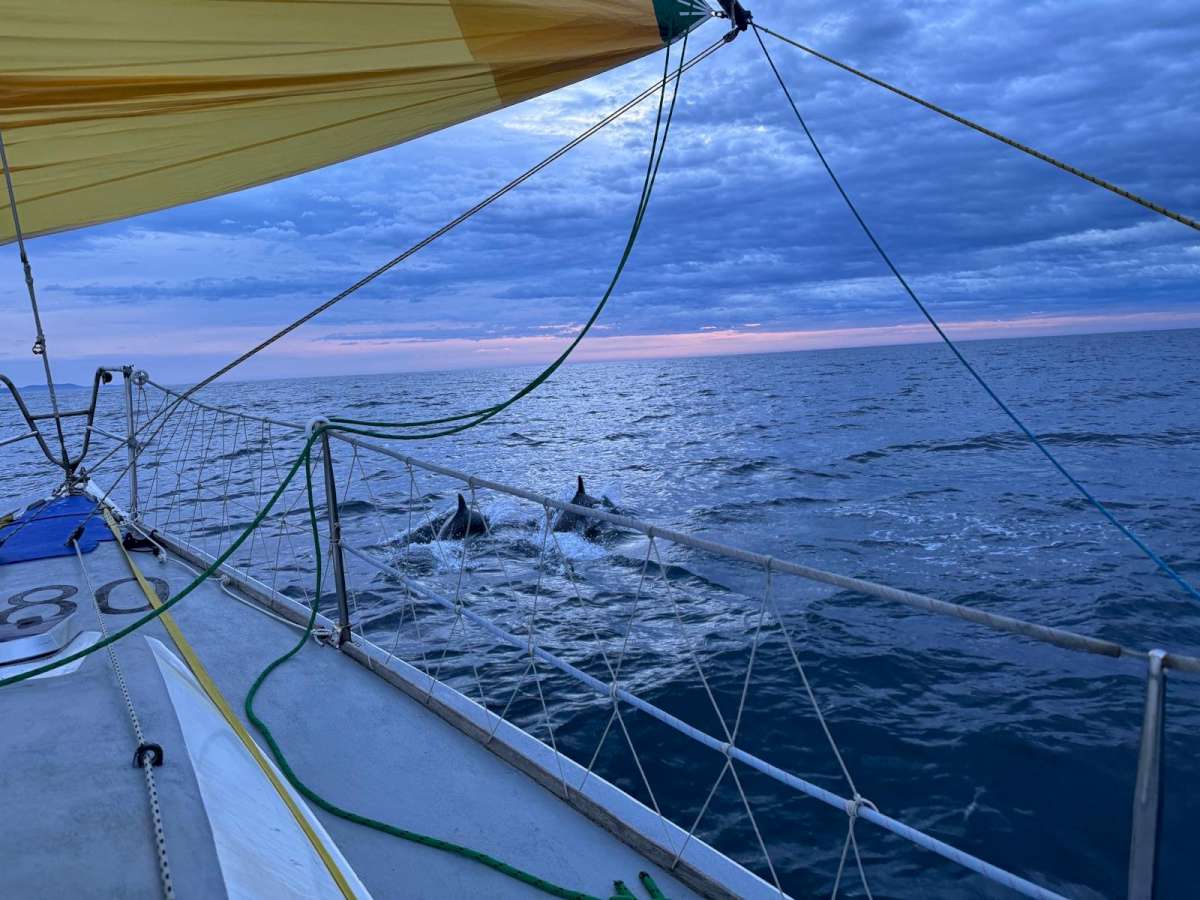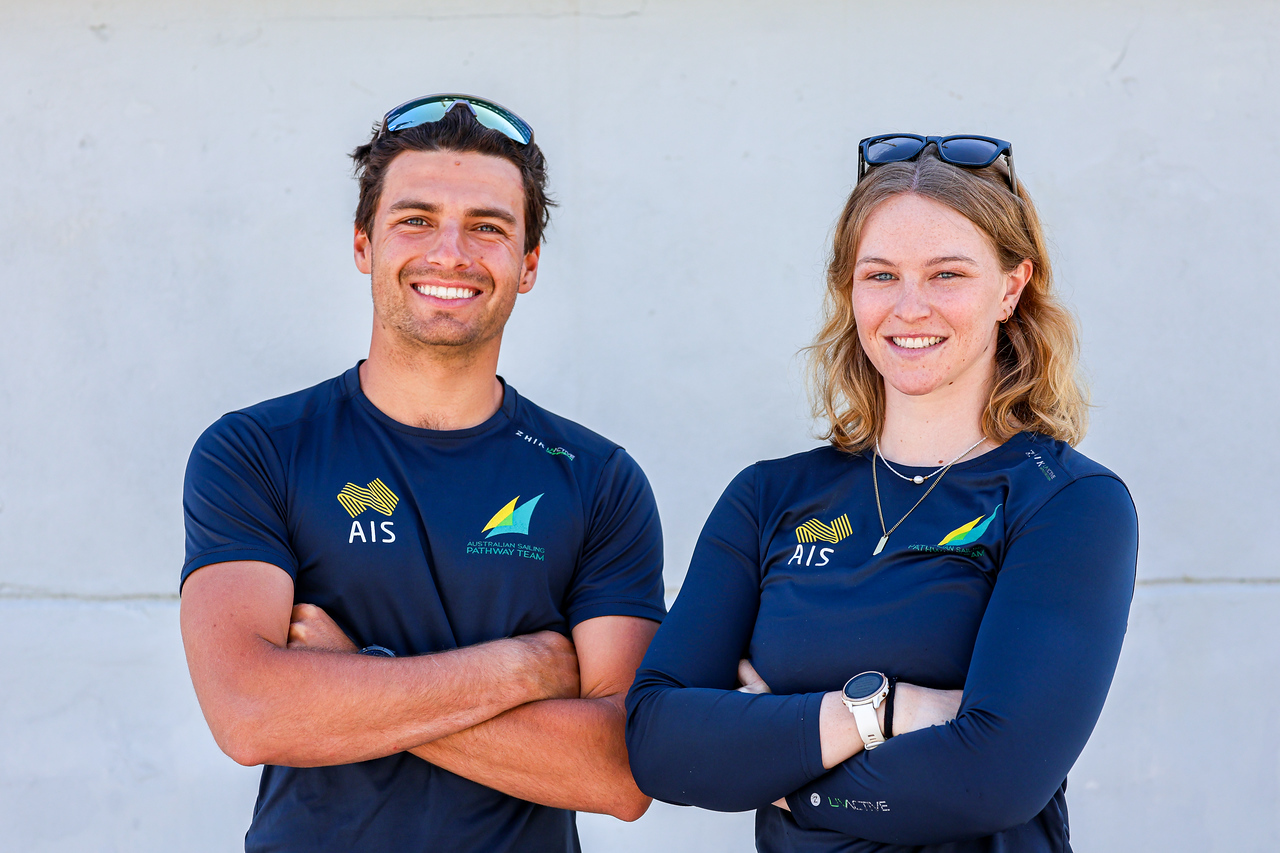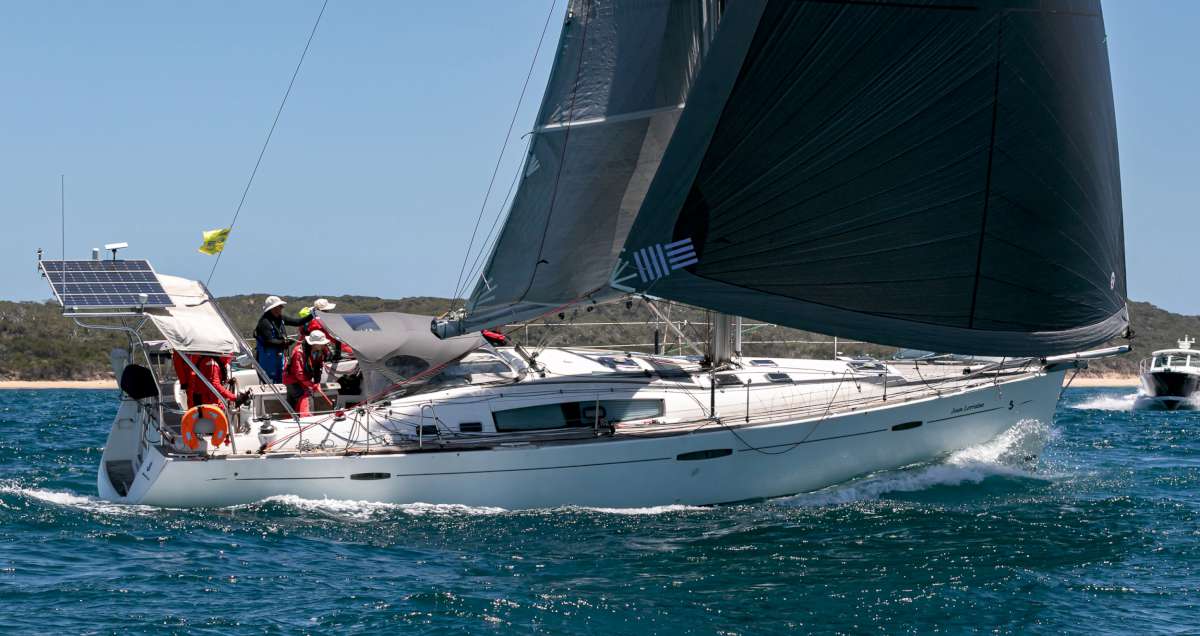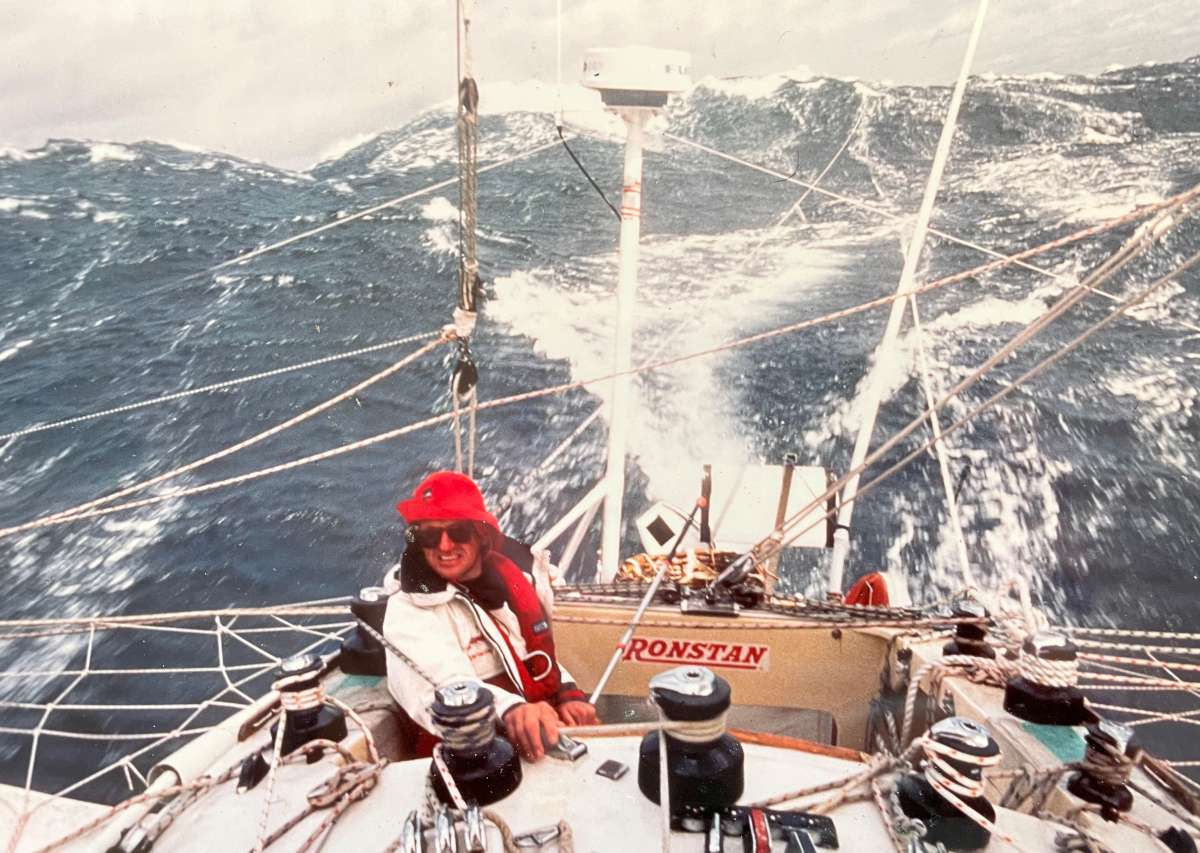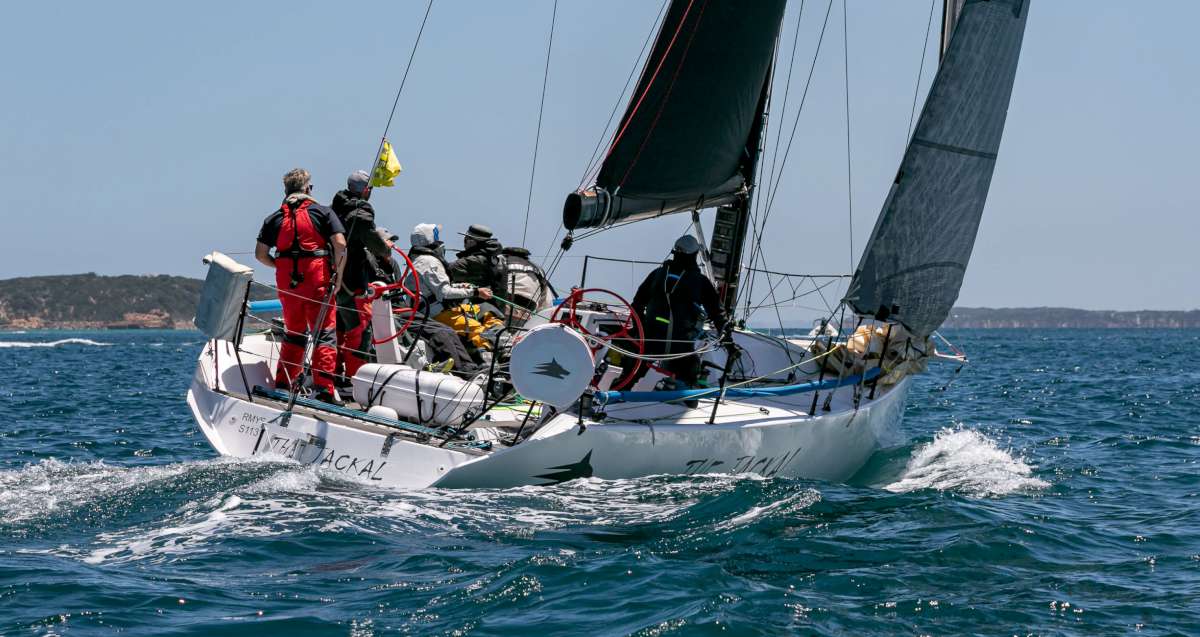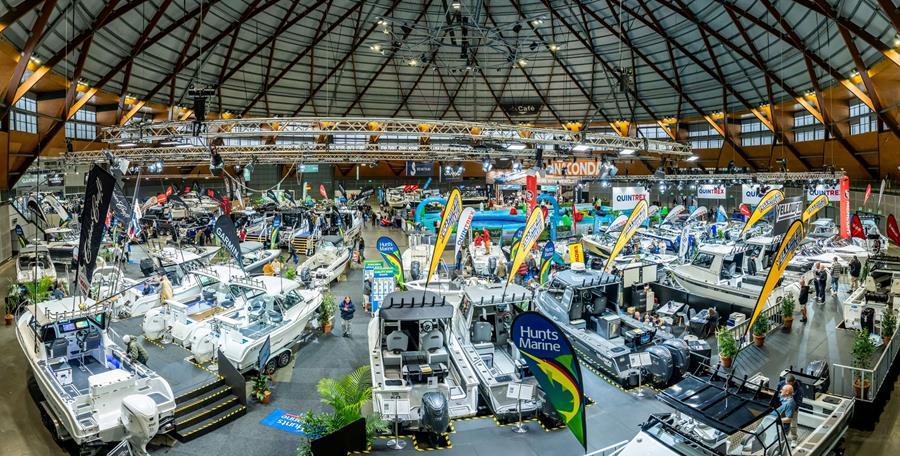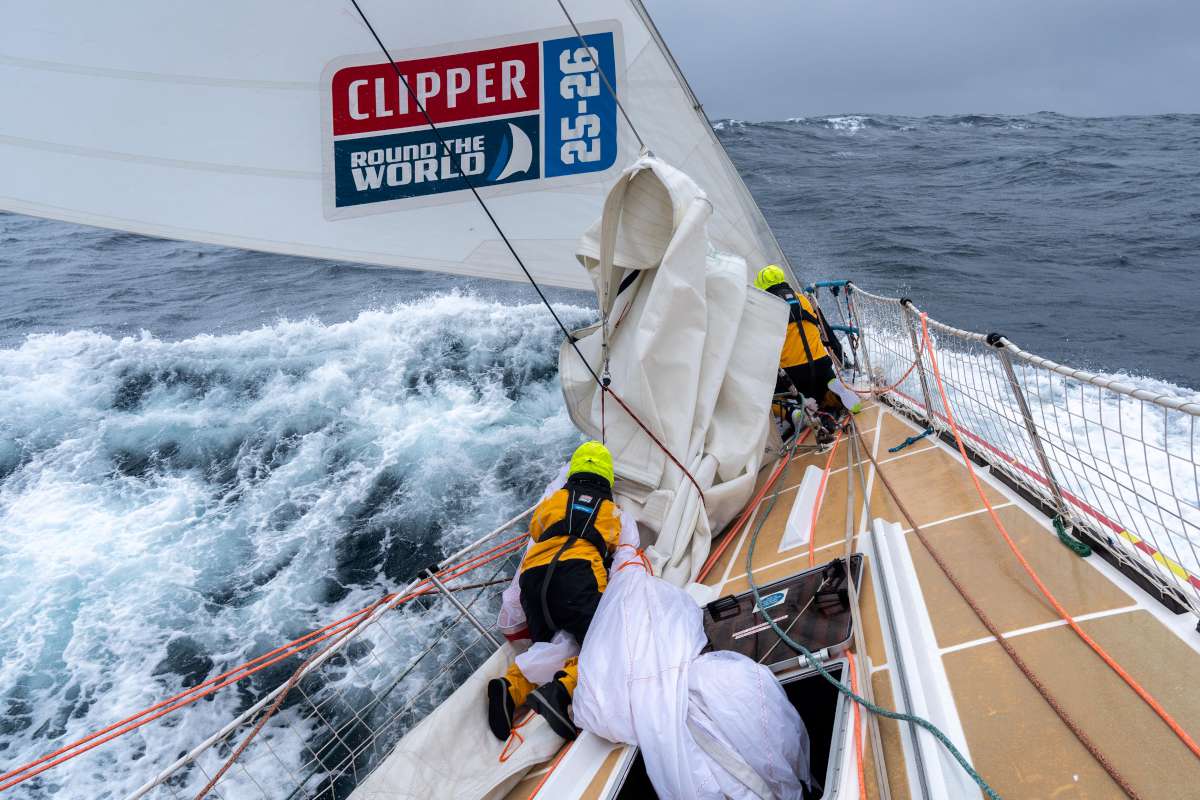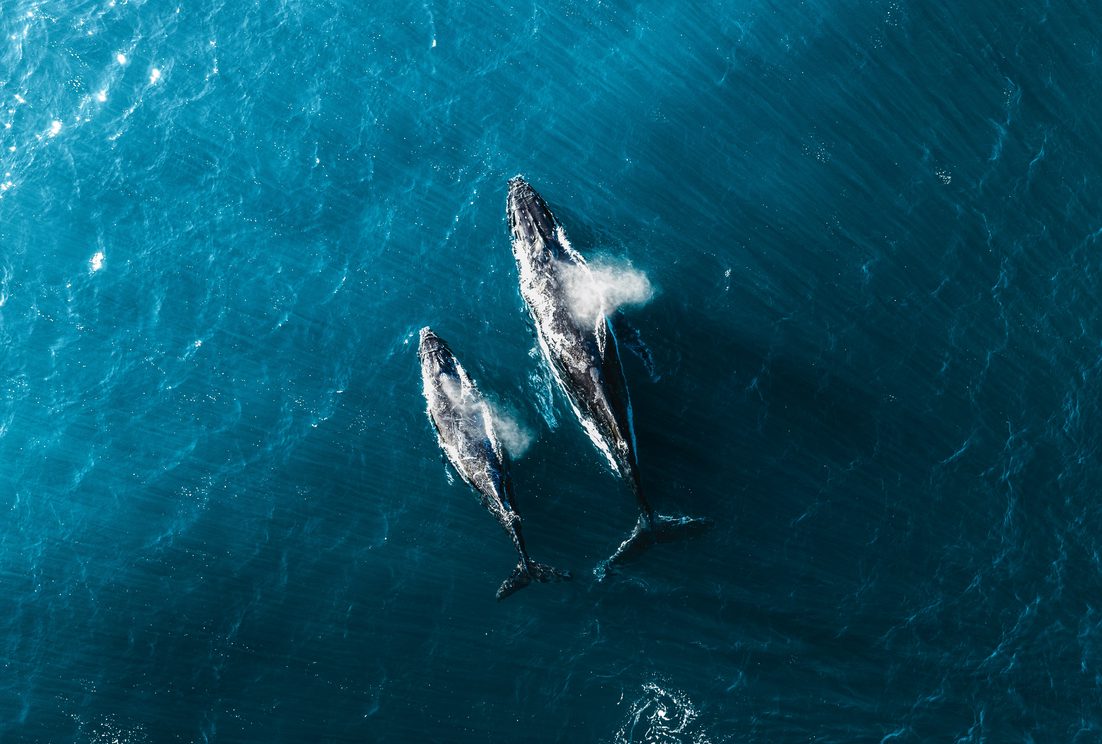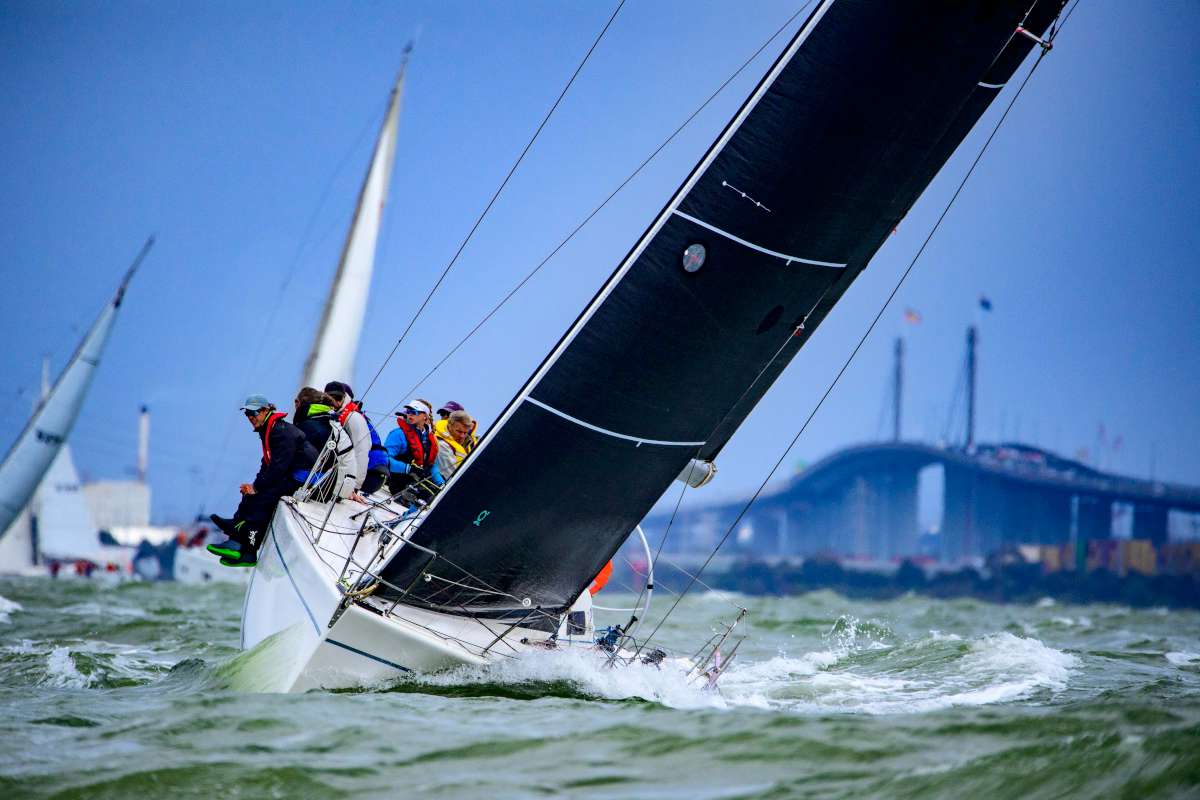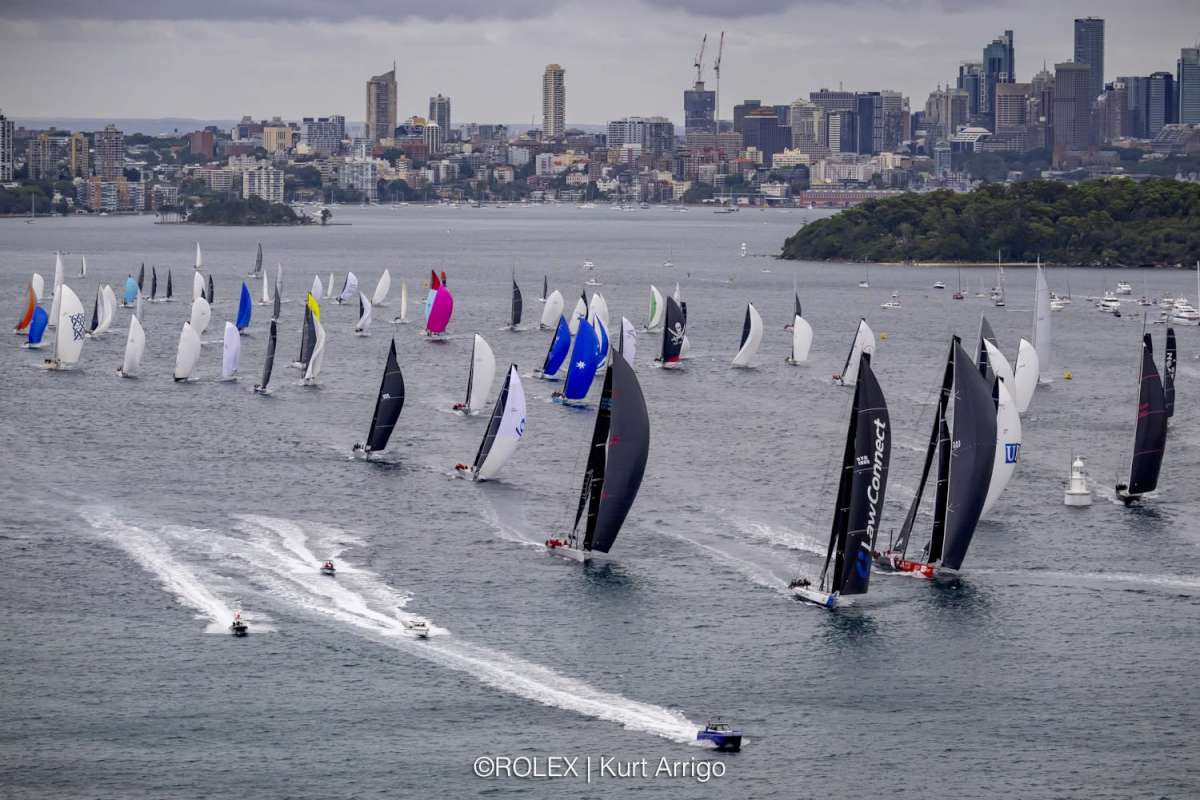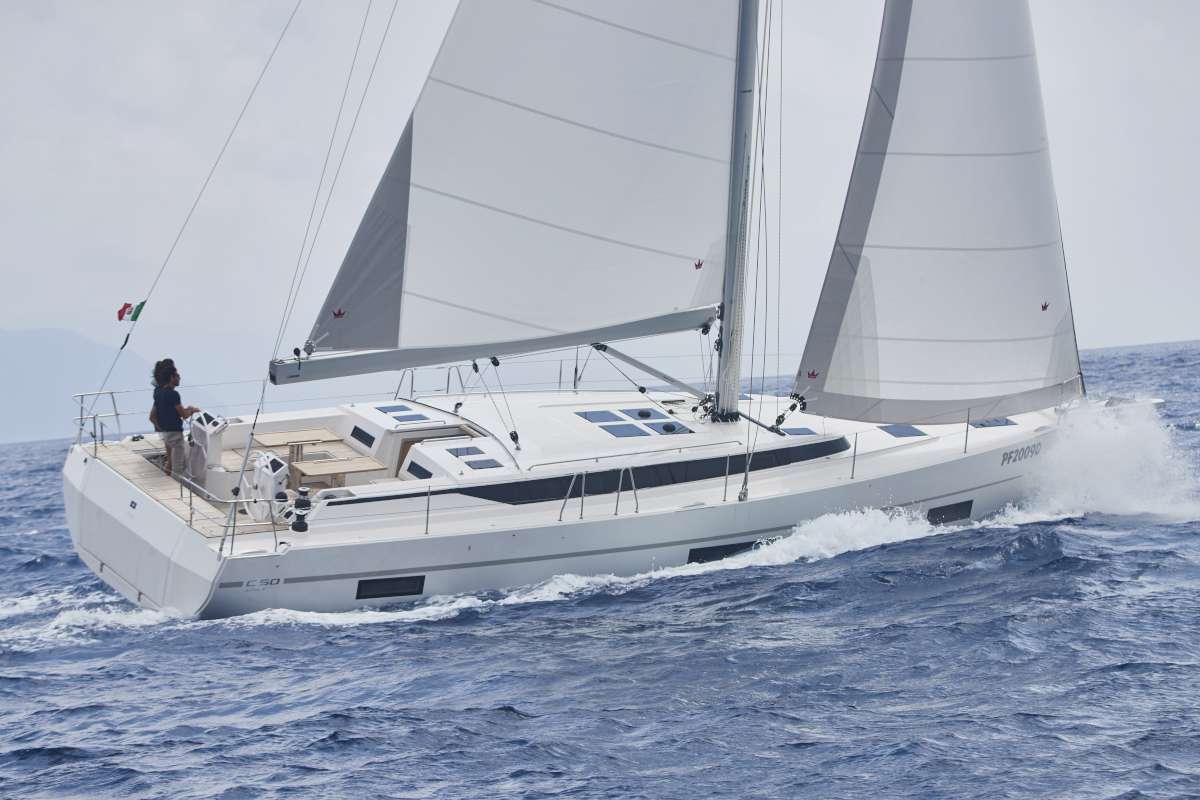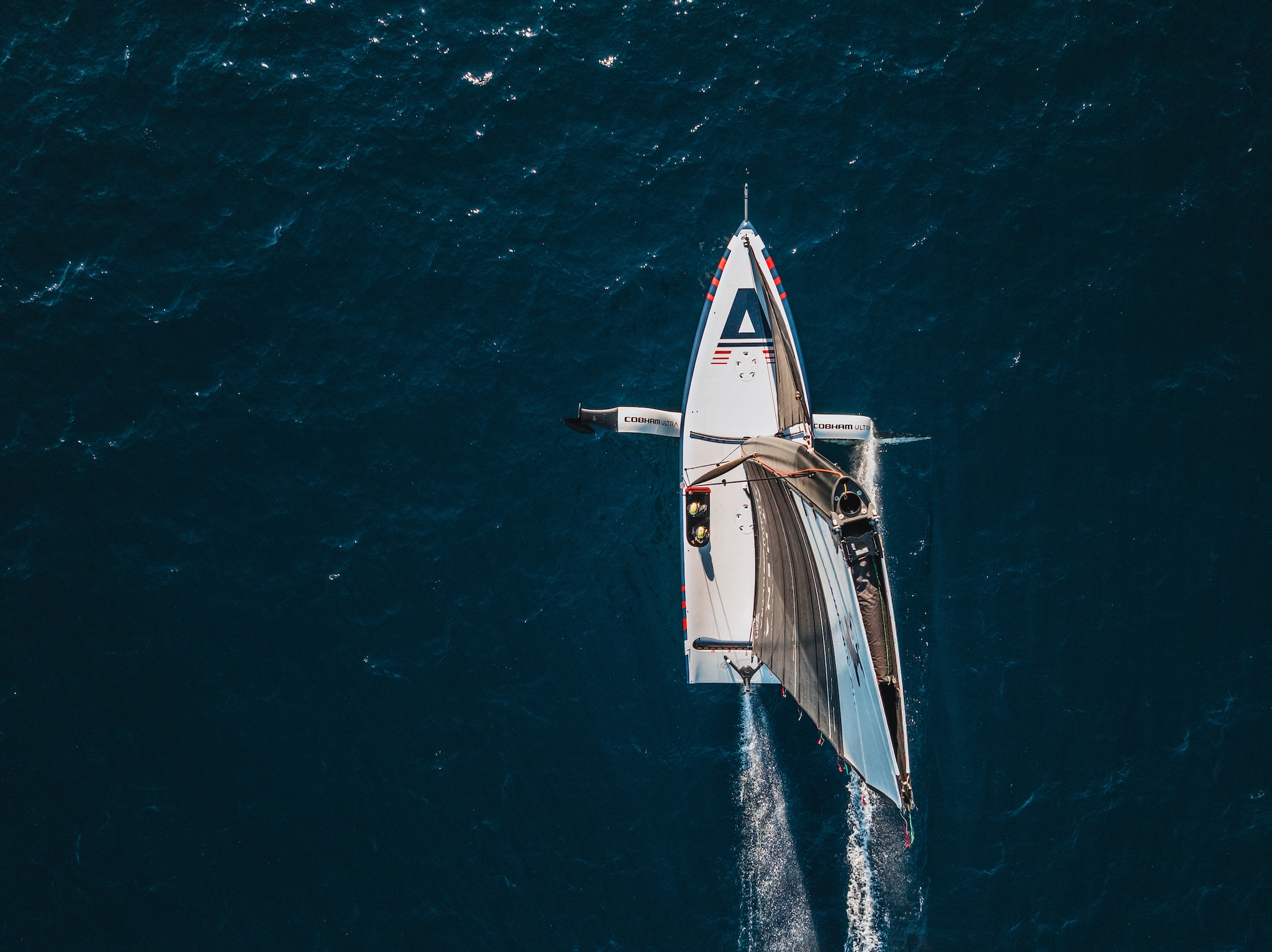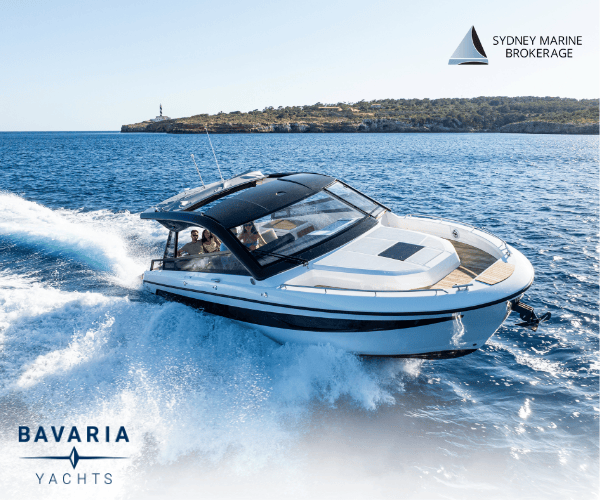A bimini for a cruising yacht today is so much more than just a sun screen. It can be a base for an electrical power station, dinghy davit, part of a cockpit long sunshade or a very serious asset to cockpit safety.
Your best chance to do it properly is when the boat is brand new. Too often one sees a disaster of unplanned additions to a floppy sunshade, each year yet another item gets added to a flimsy base. The result is an unseaworthy mess of wizzing wind blades and flapping canvas.
Amazingly, none of the production yacht manufacturers seem able to address this problem properly. They never advertise the yacht with pictures of a bimini fitted, the only options available are billowy structures, expensively produced on lightweight tubing.
Yet a bimini is absolutely essential in today’s climate of solarphobia and will become a part of every cruising yacht.
We had ordered a Beneteau Sense 50 for the 1500 mile Fremantle to Bali Race, followed by three months cruising through Indonesia and the Kimberleys. My brother, Richard Macfarlane, has lived and cruised aboard his Beneteau 4.11 for the past ten years and knows the importance of a good bimini design. He offered not just casual advice but, as the designer of the Windrush range of yachts, he can also change ideas to paper via 3D computer modelling.
The Sense has a very wide cockpit (3.6 metres) and an even wider open stern (4.6m), so the bimini did not have to go out to the lifelines and pushpit. Therefore it could be low without smashing the heads as people walk the side decks. A Catalina 34 that I have sailed a lot, would bash me on the bridge of my nose any time I was getting back to the wheel in a real hurry!
The Sense design does not have rear cabins so the steering positions are low, this allows us two metre clearance from the cockpit floor without interfering with the sleek lines of the boat, or compromising windage with a towering structure.
The Sense range is very luxury-directed, so needs its electric toys. We neglected the air conditioning, dishwasher, electric toilets and microwave. However, we still needed a desalinator, fans and then we supplied the boat with electric winches, plus interior mood lights etc. Even so, we did not want the extra mechanical problems of an installed diesel generator.
Solar cells were chosen for the power option: 3×255 watt panels came out to be 3m wide by 1.7m long and exactly fitted between the split backstays. This allowed the stays to become part of the overall structure of the frame via Dyneema lashings. This allowed us to delete the centre strut of the first design drawings.
The cells would have a max input of 60 amps at 12 volts via a fancy charger known as a ‘solar harvester’. The cells were supplied with a salt corrosion-proof certificate and a category 4 cyclone rated fastening system. Better than any marine equipment I have ever bought, but they were just the cheapies for household roofs priced at only $325 each!
The dinghy was to be a 3m Zodiac with a 9hp outboard so the strength to support the 100 kilograms was built into the frames and a single line rigging option to the power winch was designed.
Richard produced a set of dimensioned drawings which went out to half a dozen stainless steel fabricators in the town for quotation purposes. This was Western Australia during the mining boom, it is not really about how much, but will they do it at all and when!
Of the six, only one was enthusiastic but could only promise in two months time Scary as the boat was due from France in six weeks and due out for the Bali race just six weeks after that.
Getting it built
I chickened out of the whole computer-generated scene. So, over Christmas, I was feeling bored and wanted to do something useful while waiting for the new boat.
I went out and spent $100 on 50 millimetre Vinidex reticulation pipe plus moulded elbows and tees and then built a full scale model of the proposed structure. This is a scary thing to do, an ugly prototype will kill a project before it goes forward.
It sure was ugly: grey sagging pipework with blue glue seeping from the elbows. My senior financial partner in the boat helped me erect it and was not over-impressed. We resolved not to let the wives see it!
However, it allowed us to double check winch winding, headroom and visibility clearances before committing to welding. The fabricator found it to be a useful aid too, for measuring into space. If it saved an hour or two off his work it was worth it.
Our chosen fabricator Geoff from The Boat Factory turned out to be an artist with his stainless steel, interpreting our limited ideas into a sculpture of flowing curves in polished stainless tubing. He built the strength by fabricating the arch, then doubling tube as he swung on it to check out strength in the factory. Note how he built the back corners to triple thickness to take the weight of the dinghy.
He even let me bond with my bimini frame. When I called by for a minute to see how it was all going, he threw me the stainless steel buffer. Six hours later I had sure learned how much work there is in polishing stainless!
His apprentice loved having a junior in the shop for the day!
When it was fitted to the boat on time, the invoice came in at almost double the first quote, but there was twice as much pipe; so I still paid 10 per cent more than his invoice to reward his aesthetic input, now my Scots ancestry has never let me do anything like that before!
The frame of the cells are mounted beneath clips that slide into a pair of athwartship rails bolted to the lugs that are welded to the top of the tubes. These Cyclone category 4 fastenings fitted so easily, yet are brilliantly strong. A good design is a pleasure to work with.
The underside of the bimini has been finished in black sunbrella by Ocean Canvas of Fremantle and leads to a zip on the front to attach an occasional mid-sunshade leading forward.
Living with the benefits of a bimini
After three months of sailing we are still delighted.
The most obviously pleasing aspect is the handholds afforded from the doubled tube bridging across the wide cockpit and over the steering positions in exactly the right place for safety and comfort. Nobody need ever move around the large cockpit far from a secure rigid handhold.
In rough weather we tend to feel like Orang-outangs, arms getting longer as we swing from side to side whilst keeping a lookout.
The solar cells have not produced its full potential yet, as in winter the sun has never been closer to 35 degrees away from the vertical. Best amps are around 40 into our 12v system and we usually get 200 amp hours input most days.
Sailing north to Bali with southerly winds for ten days was a bit sad, as our running sails shaded the cells through the middle of the day. Another considered option, a wind generator would not be much use running either.
When cruising, every few days we need to use the main engine for maneuvering and get extra charge and we also have a 2kva Honda in a suitcase to pick up the batteries in cloudy weather, or if the beer gets warm. The dinghy is easy to lift and stores neatly either hoisted high, or lowered on its side across the transom for ocean crossings.
An inflatable dinghy was a bit scary in the Kimberleys. A couple in the next bay to us had their dinghy trashed on shore by a croc who then waited by the torn up Zodiac. For five days they lived a off a water pool in a rock and a couple of shellfish, waiting to be rescued by a passing yacht. The lady lost 10kg during her ordeal!
We were free of drama, just watched while our local 4m croc ripped up a one of our deck cushions that he stole somehow from the cockpit. I still have nightmares on how I carelessly washed out the coffee pots kneeling on the marlin board!
The shade is very welcome when sailing in the tropics and the extra mid-shade effective when at anchor. It casts a diffuse light through the cockpit, yet there is always a corner in the sun for me to sit in.
Another essential part of the design that has worked out well is that from the steering stations the sails are comfortably in view, including the mast head windex. No claustrophobic squinting through a zippered window in a canvas roof and the boat feels as open as a sailing boat should.
The Sense is a sporty responsive boat to sail but could easily be sailed like a caravan if too enclosed. The boat has a spray hood led forward from the arch at a rakish angle. Sadly, from the wheel you think that you can see through the angled clear view screen from 4m away, but in fact it is dangerously opaque. I sincerely hope that any watch-keeping helmsman will get a fright before he gets hurt. With the window unzipped the visibility is excellent, sadly sometimes crew are reluctant to do this, they might get cold, poor things!
Some sailors, wiser than me, suggested that a new boat should have a year or so sailing close to home before embarking on an ocean voyage. We had faith in the ability of Beneteau to produce a seaworthy boat straight out of the factory and we were mostly right.
The only serious problem we had related to our mainsail batten cars, all four fell apart in the middle of the night after 200 hours sailing. By the next morning we had serious gouging and scratching to the mast from the sharp stainless steel batten ends.
This problem will develop in all boats with these cars assembled this way. However, for most it will be easy to drop the sail and fix in the pen. For us 600 miles off shore it was not so easy.
We have written to Beneteau to ask at what point should Loctite be applied to the bolt in the cars? By Selden the fitting manufacture, or the sailmaker who fitted the cars to the sail? Perhaps by Beneteau who sold us the sail, or by SailForce the Perth rigger who commissioned the boat?
At $149 per batten car you would think that they could afford a stainless 6mm Nyloc nut instead of a cheap thread tapped into plastic. However, the cars are a brilliant design, we could reef and unreef easily, upwind or down, regardless of wind strength.
I guess we now have the implied answer to our question, it is our job to check everything and apply Loctite where necessary. I am sure if sailing boats did not need so much expertise to own they would sell a lot more!
In retrospect we had far less problems on voyage than most of the older, proven sailboats.
The bimini structure is so strong that we sometime envisage more uses for it: perhaps hammocks could be slung in the shade? What about a gym, with springs and handles hanging from the overhead tubes and, of course, a pull-up station too?
Even more exciting: a tuna boat-style tower maybe, a flybridge with seats and controls; it would be so special for sailing visibility. But it will not happen on my watch, I am happy with what we have!
And the Bali race? From the 20 odd boats in the rally section we won the monohull division and shared the overall prize.
A storm hit the fleet and all the yachts hid for a day or so behind islands in Shark Bay. It was the speed of the Sense that allowed us to catch up the 24 hours that we lost, arriving in Bali two hours earlier than our original predetermined schedule.
In conclusion, we have achieved exactly the right bimini design to fit our requirements and the boat that we have chosen.
Other sailors may have different agendas, but with careful forethought, drawings, models and choice of fabricator, you can get exactly what you want to make your cruising yacht as perfect as ours.





